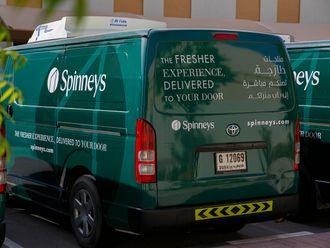Apple became the first brand in human history to be valued in excess of a trillion dollars — and that speaks volumes for the importance of innovation, consumer loyalty and consistency in branding. Yet, few agencies, or their clients, take a holistic approach to branding; often, because of their legacy internal structuring, they tend to work in silos.
This is totally counterproductive to delivering a cohesive and consistent brand to the consumer — proper branding connects the dots and unifies a business approach and reach. A great way to assess any brand is to consider how it’s delivered across the “six dimensions”:
• Brand positioning — Understanding the why of your brand not just the what and how of your business;
• Brand identity and communications — Singling change in a fast-changing world;
• Architecture and interior design — To create a tangible physical brand experience;
• Digital ecosystems — To connect by proving relevance to your target audience;
• Staff training on brand — Because in the end, your staff are your brand; and
• Products that care — Only those products and services that make the world a better place will succeed.
Take staff training for example, a given for any business seriously concerned with building a brand, but often ignored or underestimated. We all know it’s people who deliver brands. Just think of your last interaction with a brand and it’s likely to be defined by the actual person you met or spoke to.
That’s why smart brands spend increasingly more time in training their staff in the brands’ desired behaviours, actions, and tone of voice. In fact, no matter how good your identity, or advertising campaign or social media reach, if your partners and employees don’t understand exactly what your brand stands for, consumers never will.
Products that care is also often ignored although awareness is changing and the next era of successful branding will be driven by a desire to ensure that the products and services a business delivers are as differentiating as their logos.
Differentiated product propositions are becoming a key driver for business. For instance, at BrandLab, we have recently designed credit cards as bespoke jewellery for a new private bank offering, and re-envisioned retail banks like drive-through petrol stations. We are also about to launch an online app business dedicated to the re-cycling of premium branded products, where underprivileged women refurbish branded products to sell to more privileged women under a movement we are calling “Women for Women”.
Deep down, most of us know that each of these aspects of branding is equally important and we know they are mutually inter-dependent. But most of us specialise, so we, as an industry and as individuals, tend to promote only the area or areas we’re actively working in. So, advertising agencies insist that tactical campaigns are the most important thing, digital agencies say apps are everything.
There’s no wonder that many clients are confused when it comes to the importance of fully integrated strategic branding.
It has, and will, continue to evolve, delivering increasingly relevant and consistent meaning across all its touch points, tailoring authentic experiences that are bigger than just another product or service. And the future looks bright for those brands that actually care, maintain authentic values and enjoy leadership that is focused on connecting the dots across all six dimensions of their business — that’s true branding!
Aubrey Ghose is CEO of BrandLab, the branding arm of Group Partnership.












